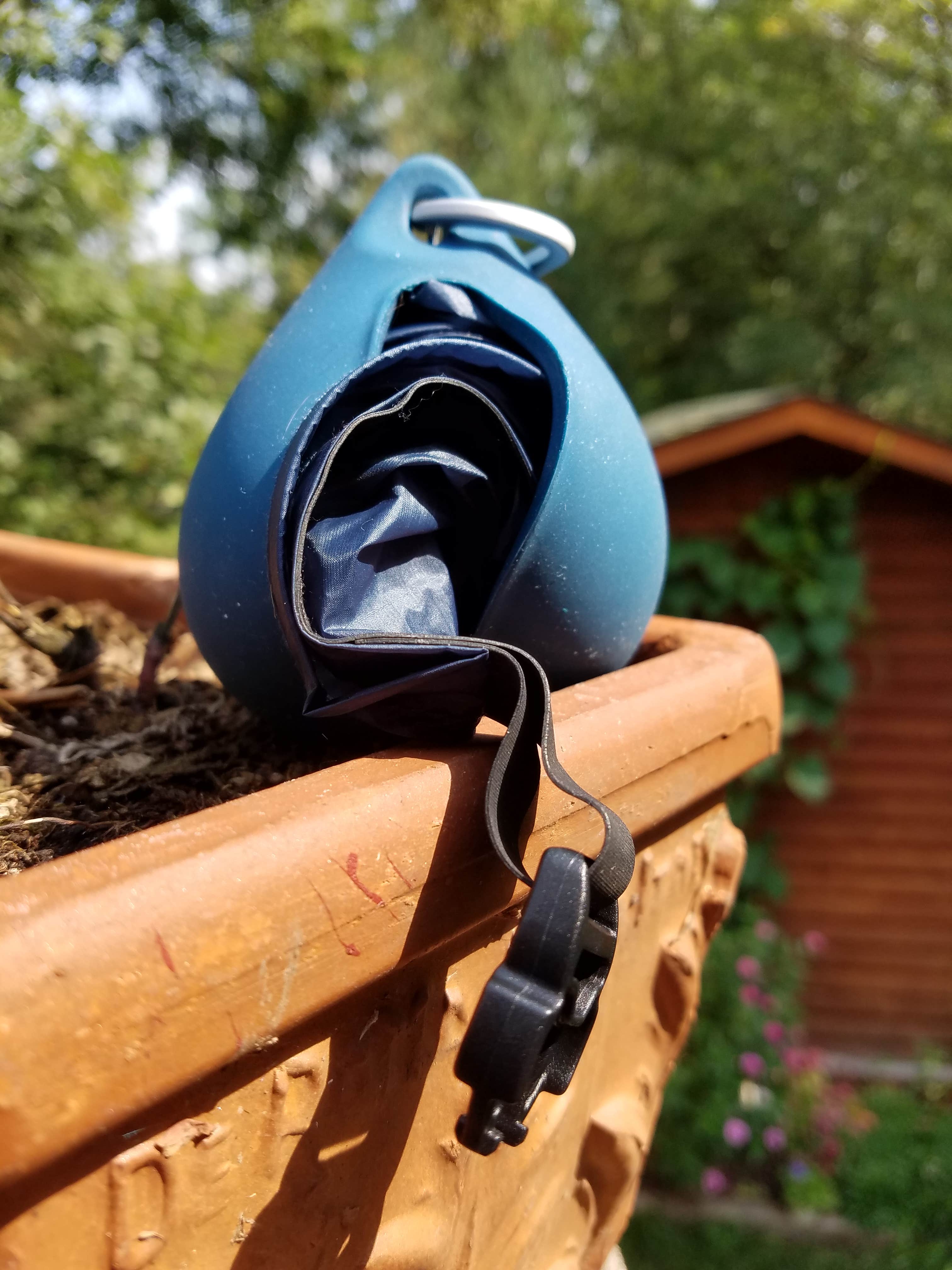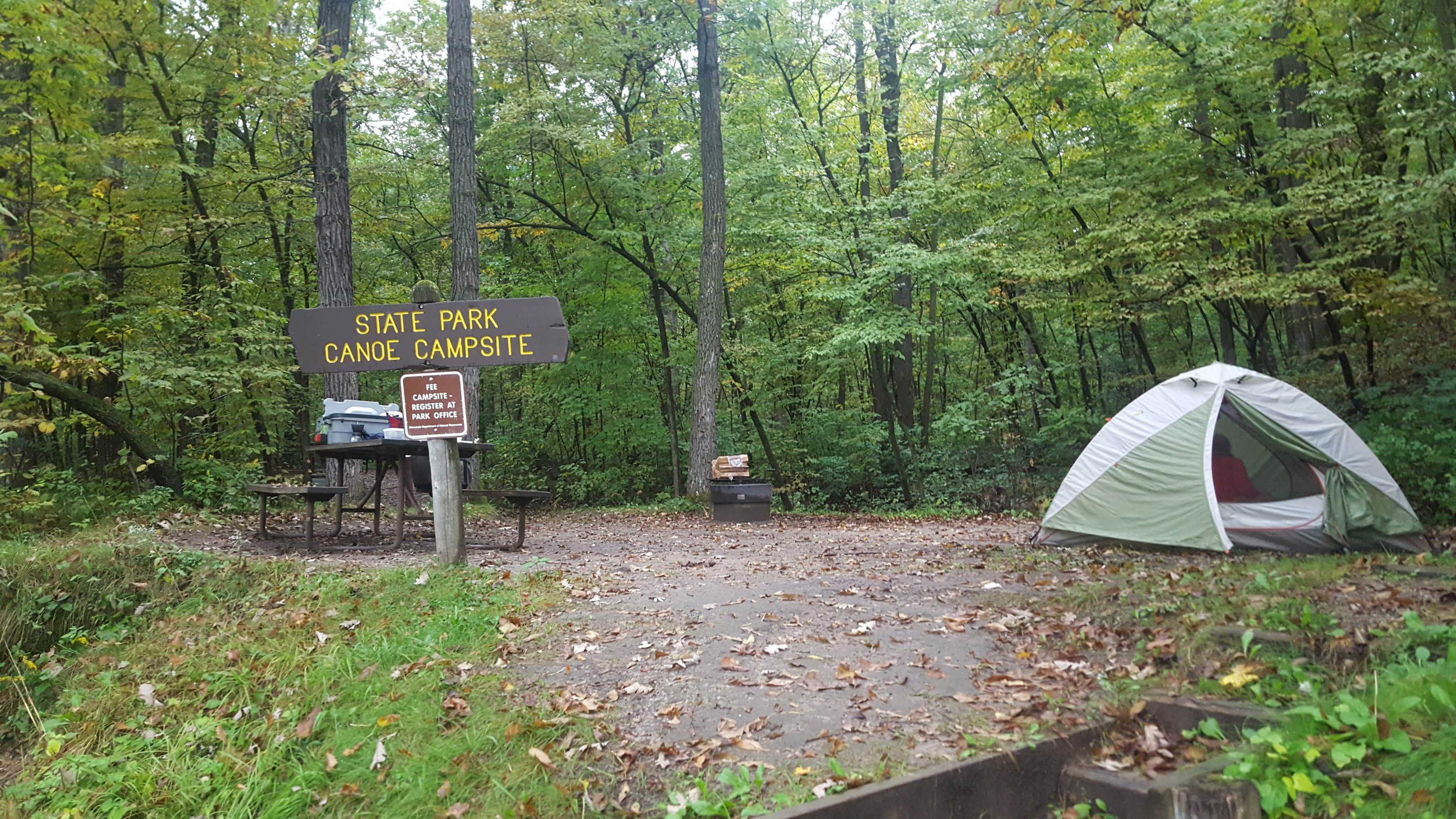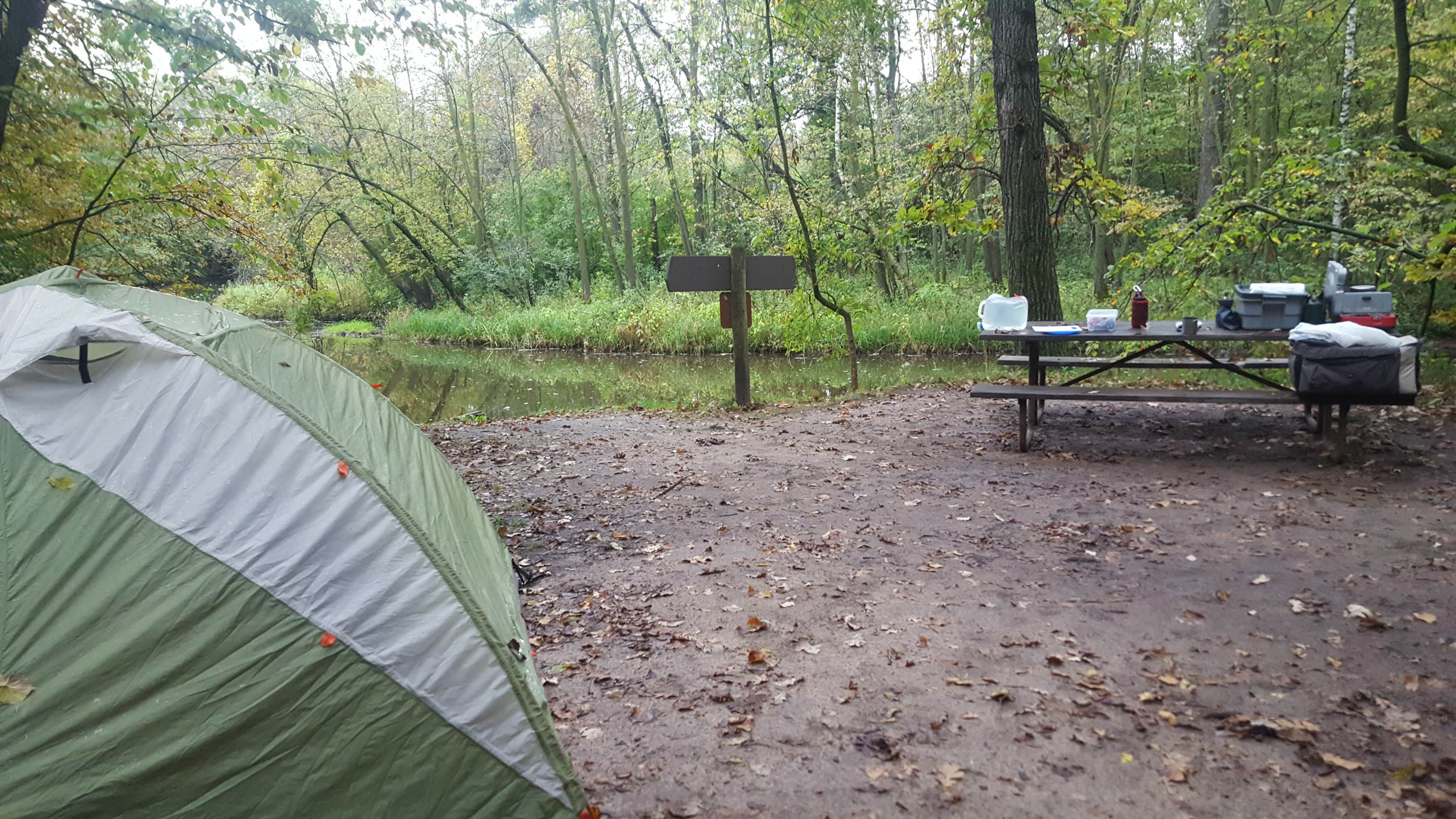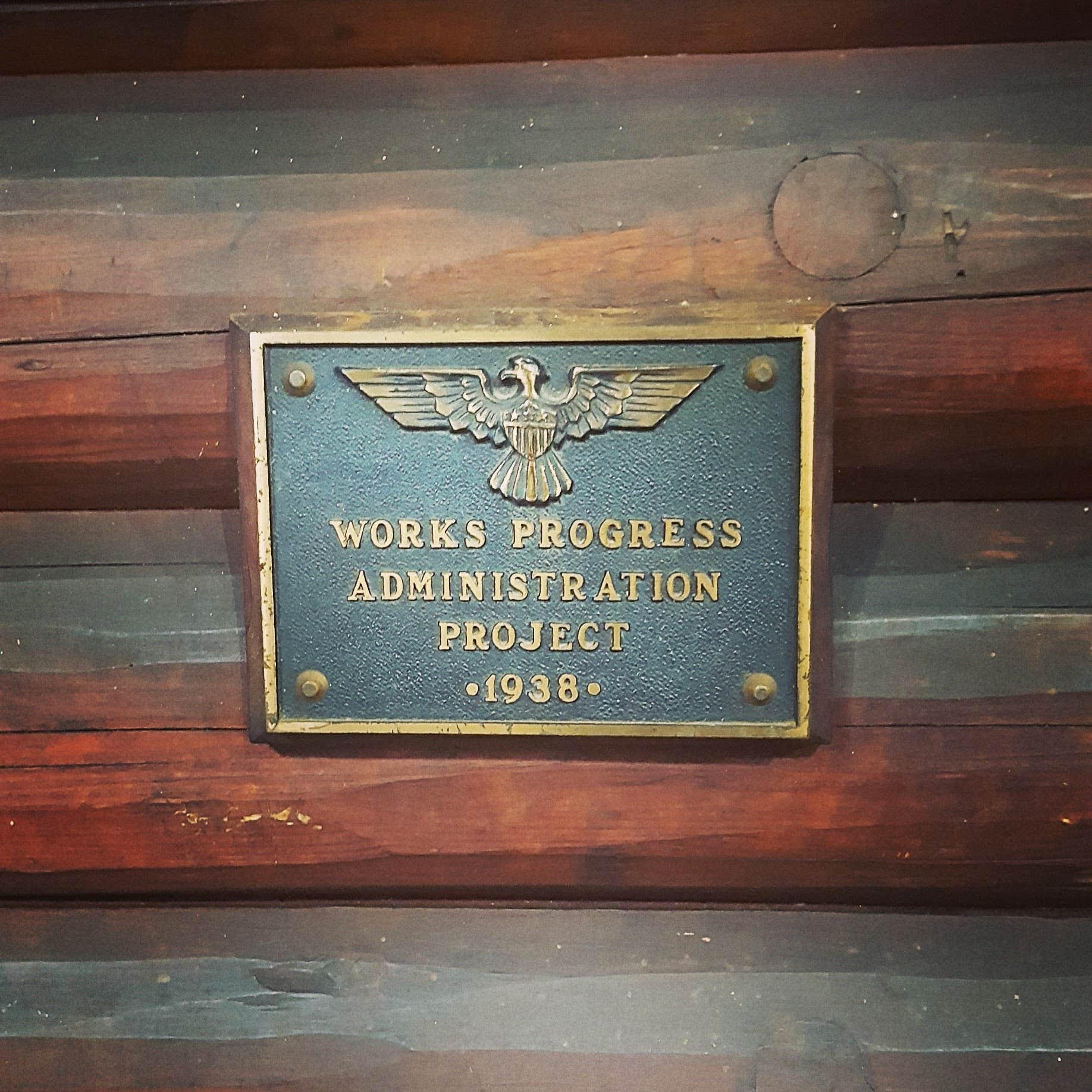At the end of a long day, even if it was full of fun, but especially if it wasn't, all you want to do if find a campsite, set it up and chill out. That would have been kind of hard to do at Lindbergh State Park, at least coming to the canoe sites off the river. But once we were there, it was very quiet and easy to get to. But at least I had my Matador Droplet XL Dry Bag, just in case we tipped over in our quest to find it.
CAMPSITE REVIEW:
We decided that this campsite was going to be our last stop on our river trip. Charles Lindbergh State Park has many campsites, but there are a few they call "cart in". They are also referred to as "canoe in", depending on which way you approach and arrive. It's a good thing we had a map, because we wouldn't have found it off the Mississippi by ourselves. In fact, even with the map, it wasn't the easiest to find. The last thing you want to do at the end of a long day is wonder if you took a wrong turn.
Yes, it's at the park. So we eventually would have found the campsite, but coming at it off the river, it seemed to be hidden. Until we saw a tiny sign, over a bridge, off to the right that said the name of the park (and no STATE PARK signs anywhere like you usually see along the river). So we took a right turn, and it led us to a swampy bog. And the bog kinda took a right turn through a weird little twist and turn of weeds and trees and abandoned buildings. I swear I heard banjos. And just when we thought we might be in the wrong spot, bingo! A campsite.
As hard as it was to find, it was incredibly easy to get into. A few little steps out of the water and that was it. We were there! This little offshoot of the Mississippi was called Pike Creek, and apparently was the place where Lindbergh used to come and play and swim. So, although difficult to find via watercraft, a little piece of history to enjoy.
The campsite was fairly small, but served it's purpose. We were at site C1 (Cart in #1? Canoe in #1? Can't find it #1?) A very flat tent pad was a great find. Fire ring, picnic table, plenty of trees and shade. Bathroom was a bit of a haul, up a hill and to the left about 1/4 mile. There was a shower house, but due to the confusing nature of the park/trail sign nearby, we ended up walking the wrong direction and spent about 20 min walking about a 1/2 mile. If we'd walked the other direction, it would have taken half the time. And the showers were so-so. They worked, they were hot, and they were private, but I'd advise to take your water shoes with you before you step into the stall.
There was a second site as well, right next to the first. And in fact, the second is right on the trail to the bathroom, so if you were staying in that site, anyone at campsite #1 would have to walk through campsite #2 to hit the trail to the toilet. Hmmm…. At least that site was empty for the night.
I rated this as three stars for the lack of signage, the close proximity of the 2 sights that are supposed to be more secluded, the confusing trail signs and the fire pit that was so deep that unless you had a raging blaze, you couldn't see the flames once the initial logs burned down if you were sitting in camp chairs. But it was pretty, it was quiet, and there wasn't anything wrong with the campsite itself. It served it's purpose well and gave us a a place to crash for the night.
Note: As usual, because it's a state park, there is a reservation fee, even though you can canoe in. Most canoe sites on the river are free, unless they are in a state park. We reserved this "the day of" and paid $15. If you reserve in advance, there is an additional reservation fee.
Oh, and one last thing…beware of the deadly falling acorns if you go in late summer. Almost all the trees are oak, and the lightest bit of breeze (or the shimmy of a playful squirrel collecting his winter stash) sends them showering down. Onto your head. Or hitting your extremities. Or plinking into your coffee.
GEAR REVIEW:
As a Ranger for The Dyrt, I have the awesome opportunity to get incredible gear in exchange for an honest review of it. This time, I had the pleasure of trying out the Matador Droplet XL Dry Bag Wow…love this thing!.
Now, I'll first admit that I didn't have my bag bobbing in the Mississippi River. I didn't take it that far, but I know what a dry bag is supposed to do, and how it needs to be constructed to do that. This thing packs a huge punch for it's size! Here's the specs:
- It's 20L
- Made of 15D waterproof ripstop nylon
- Seam sealed
- Has a beautiful little roll down type of latch that doubles as a handle for carrying it if you roll it a few times like you are supposed to. It's huge!
- And it weighs almost nothing. Seriously…almost nothing. They claim the entire thing is about 5oz, but I weighed it and both together weigh less than 4 oz, and the bag alone is only about 1.5 oz.
It comes stuffed in this little silicone "droplet" (hence the name). The droplet has a clip on it for your backpack or whatever. Honestly, if I need the dry bag, I'm probably not taking the silicone droplet with me since it's got some weight on it, and if I'm using the bag, I don't need the storage pod, but it's a great way to package it and keep it stored when not in use. The fabric is pretty slick and slippery, so it's kind of hard to fold and keep folded without the pod to do so. So the droplet serves it's purpose well when you need it.
The real reason I wanted to try this thing out was for my backpack, because I absolutely hate pack liners and I wanted a dry bag large enough for my sleeping bag and pad. This fits them perfectly, with a little room to spare. So even though I didn't have my pack with me, this held those items and went in our canoe bag (which isn't waterproof) and kept my things nice and dry every day I packed them.
It's durable construction and lightweight fabric make it ideal for adventures on the water, near the water, or simply when water falls from the sky and all you want it to do is go away. No worries…your gear will be nice and dry!































